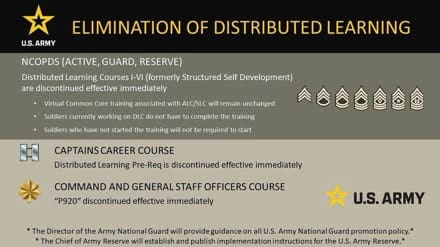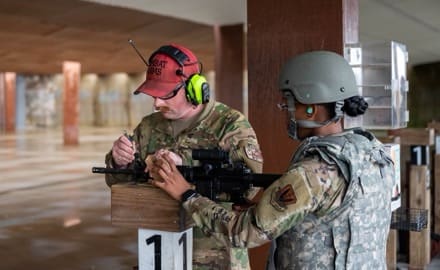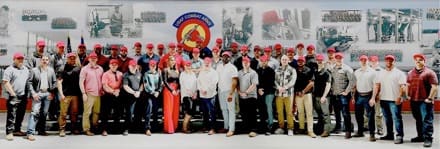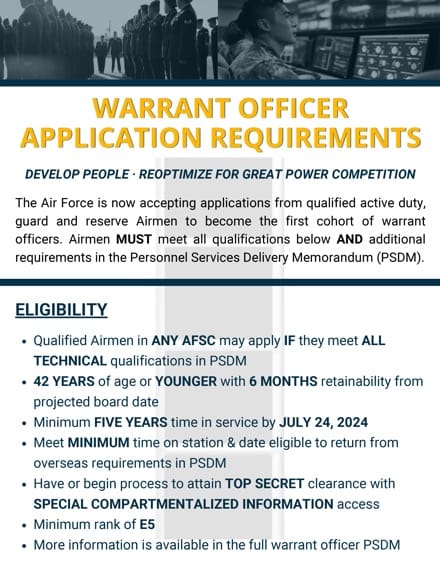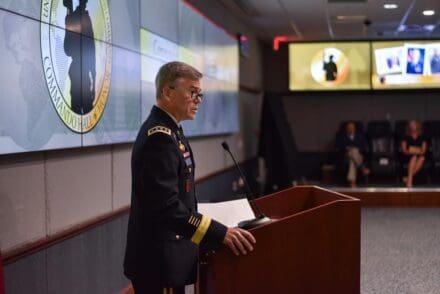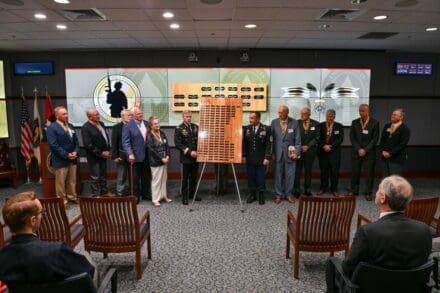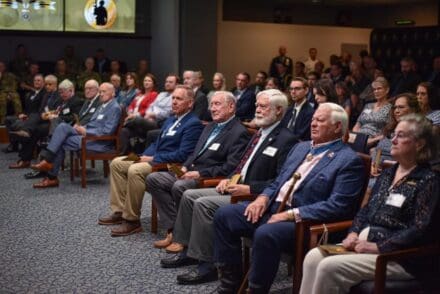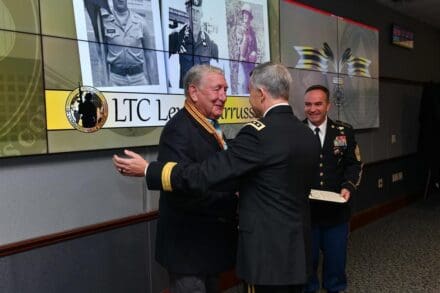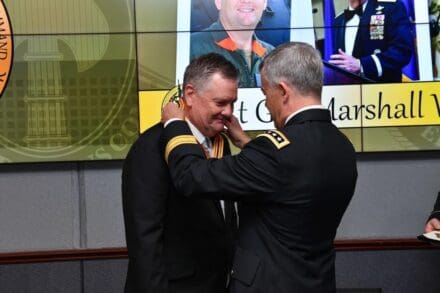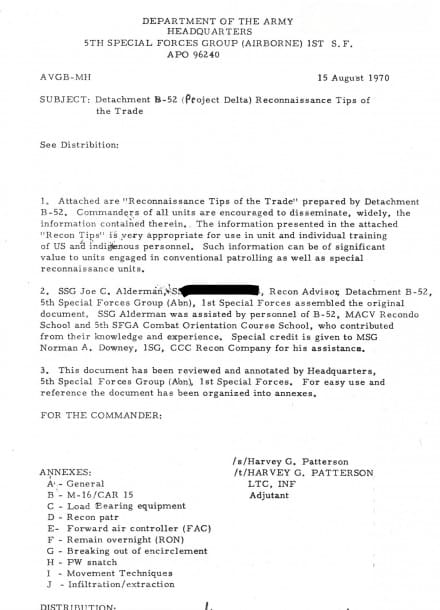Secretary of the Air Force Public Affairs
ARLINGTON, Va. (AFNS) —
In our democracy, elections are quite common, and with a presidential election this year, we can expect many opportunities for citizens to participate in the democratic process. With this in mind, it is important to be aware of specific guidelines that apply to service members and federal employees on acceptable behavior.
Military personnel and civilian employees are encouraged to carry out their obligations of citizenship, which include the right to participate personally in the political process. These rights are protected by the U.S. Constitution that all military members have taken an oath to support and defend.
Because of that oath, service members and civilian employees also have a duty to ensure that their personal activities do not imply official endorsement by the Department of Defense or Department of the Air Force. As individuals, we do not have to be politically neutral, but the Air Force and Space Force do. These rules help to ensure the DoD does not influence or appear to be partisan in our nation’s electoral process.
Department of Defense Directive 1344.10, Political Activities by Members of the Armed Forces, and individual service regulations outline permitted and prohibited political activities by active duty, Reserve component and retired service members. These rules regulate how and when service members are able to participate in the political process. Service members who violate these directives could face punishment under the Uniform Code of Military Justice and/or other criminal or administrative penalties. The Hatch Act of 1939 (5 U.S.C. 7321-7326) applies to civilian employees and similarly regulates how and when individuals can conduct personal political activities.
Service members and federal employees are encouraged to participate in the political process, but they must be careful about not engaging in political activities in the workplace and not using their official positions to advocate for or against political issues. With the directives set forth in DoDD 1344.10 and other regulations in mind, service members should be aware of what they can and cannot do regarding political activities. The below do’s/don’ts are not exhaustive, and service members and employees should consult with their servicing legal office with any questions regarding their personal political activities.
Active duty service members CAN:
· Register to vote, vote and encourage others to vote.
· Express a personal opinion on political candidates and issues.
· Write a letter in a newspaper, blog or social media expressing personal political views. However, if you identify yourself as a service member (for example, if you have a photo on your social media of yourself in uniform) you must include a statement that your views do not represent those of the Department of Defense or Department of the Air Force.
· Attend partisan or non-partisan political rallies and clubs as a spectator during off-duty hours. However, service members (including retirees) may not be in uniform.
· Serve as a non-partisan election official while off-duty and not in uniform. However, this requires Department Secretary (e.g., Secretary of the Air Force) approval. Contact your servicing Legal Office for more information.
· Sign petitions for legislative action or to place a candidate’s name on the ballot, if done as a private citizen and not as a representative of the armed forces.
· Donate money to a political party, candidate, organization or committee.
· Display one non-offensive bumper sticker on your personally owned vehicles.
· Wear political t-shirts or buttons when not in uniform, performing military duties or when it could give the appearance of DoD or DAF endorsement.
Active duty service members CANNOT:
· Attend a political event (meeting, rally, fundraiser, debate, convention) in uniform, whether it is partisan or nonpartisan.
· Express personal opinions as if they are service branch or DoD policy.
· Make derogatory statements about elected officials and DoD/DAF leadership – a potential UCMJ violation.
· Organize, lead, sponsor or speak at partisan political events.
· Engage in partisan political fundraising activities – except as a donor.
· Place large political signs on your vehicle (bigger than a bumper sticker).
· Display any type of political sign, banner, poster or similar device in your office, work area or on-base residence (including privatized housing).
· Engage in the public or organized recruitment of others to run for political office.
· Run for political office without Secretary of the Air Force approval.
· Attempt to influence the view, position or vote of any subordinate.
The Hatch Act governs political activities by DoD and other federal civilian employees. The Hatch Act provides restrictions that are similar, but not identical, to those imposed on active duty service members, and restrictions on civilian employees are broken down into “Further Restricted” and “Less Restricted” categories. Most DAF employees will be “Less Restricted,” meaning, GS-15 and below, and Schedule C employees. Federal civilian employees who violate these rules and restrictions are at risk of disciplinary actions, including reprimand, suspension, removal, debarment from federal employment for up to 5 years, and a $1,000 fine.
All federal civilian employees CAN:
· Register to vote, vote and encourage others to vote.
· Express a personal opinion on political candidates and issues.
· Write a letter in a newspaper, blog or social media expressing personal political views.
· Attend political fundraising functions, rallies and clubs during off-duty hours.
· Serve as a non-partisan election official.
· Sign petitions for legislative action or to place a candidate’s name on the ballot, if done as a private citizen.
· Donate money to a political party, organization or committee.
· Display one non-offensive bumper sticker on your personally owned vehicles.
· Be candidates for public office in nonpartisan elections in accordance with Office of Personnel Management requirements.
· Display or wear political signs, stickers, t-shirts or buttons when not on-duty, in a government building or using a government vehicle.
All Federal Civilian Employees CANNOT:
· Use official authority or influence to interfere with or affect an election.
· Solicit, accept or receive political contributions.
· Use an official title while participating in political activities.
· Engage in political activity while: on duty, in a government building or vehicle or wearing an official uniform.
· Become a candidate in a partisan election.
· Host or sponsor a political fundraiser (though merely attending one is permitted).
Less Restricted Civilians CAN:
· Volunteer to work for partisan political campaigns
· Attend and be active (including speaking) at political rallies and meetings
· Join and hold office in a political party or organization
· Work the polls on election day for a candidate for partisan political office
· Assist in partisan voter registration drives (but not in the workplace).
· Organize and speak at a political fundraiser (but cannot solicit or receive funds).
Service members are encouraged to review DoDD 1344.10 and Department of the Air Force Instruction 51-508, Political Activities, Free Speech and Freedom of Assembly to understand permissible political activity.
DoD civilian employees are encouraged to visit https://osc.gov/Services/Pages/HatchAct-Federal.aspx for more information on the Hatch Act.
All members are encouraged to review the Deputy Secretary of Defense’s 15 February 2024 memorandum on Political activities, available at: dodsoco.ogc.osd.mil/Portals/102/Documents
The information in this article is provided for informational purposes and is not intended as legal advice. For further assistance or if you have questions or concerns, please contact your installation legal office.
